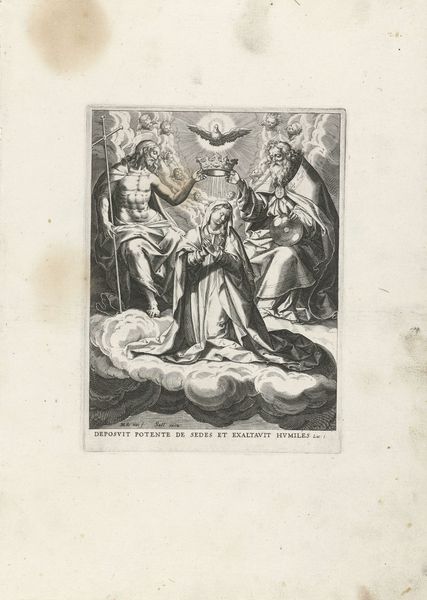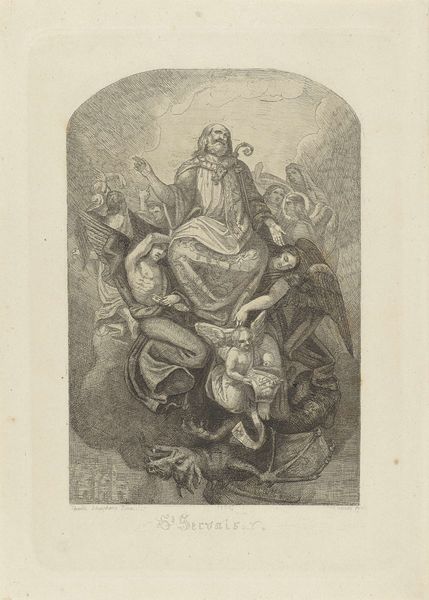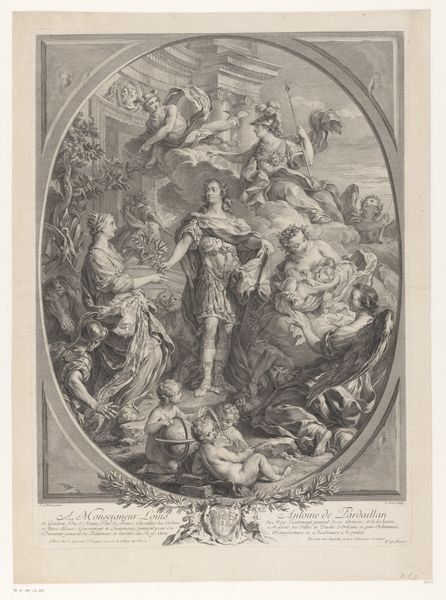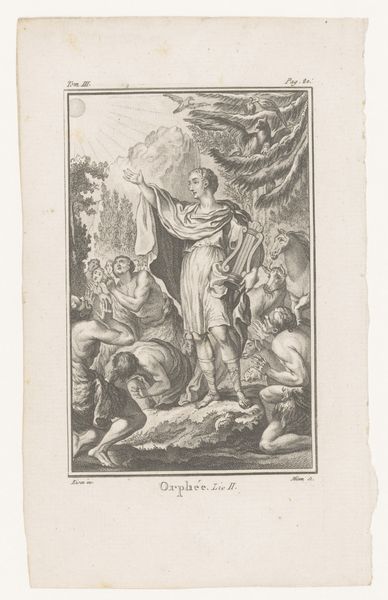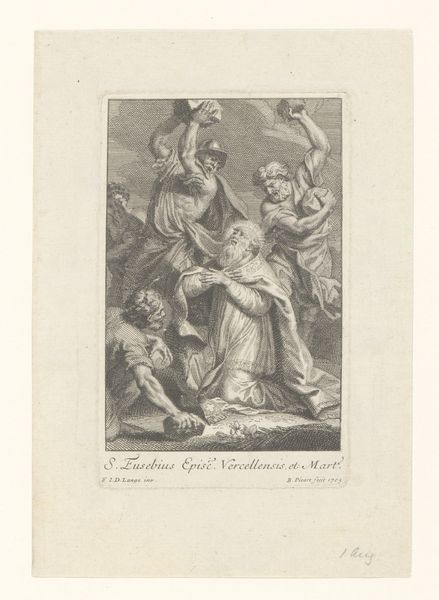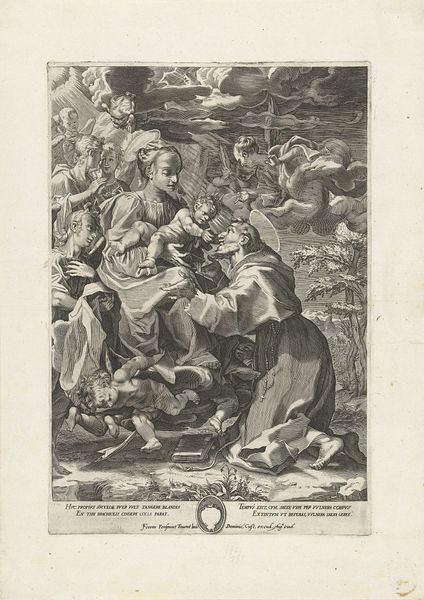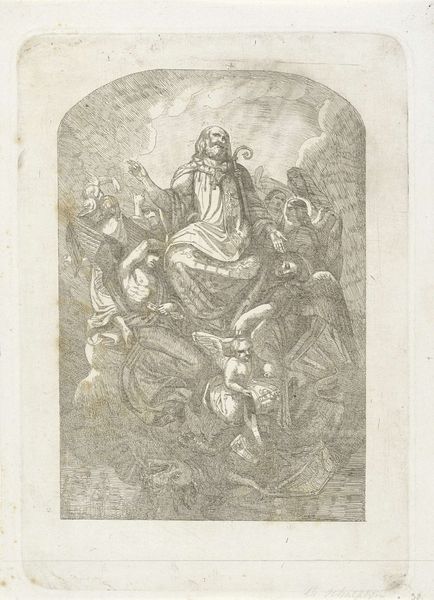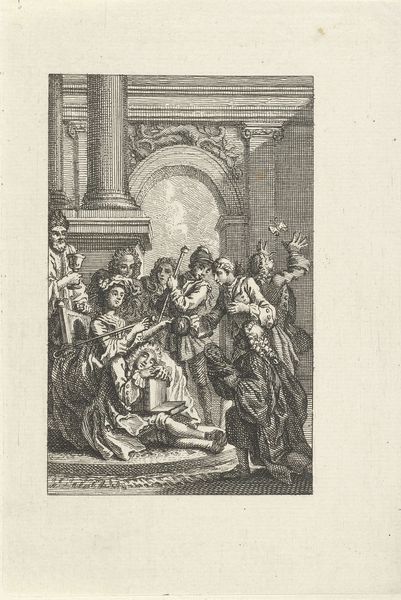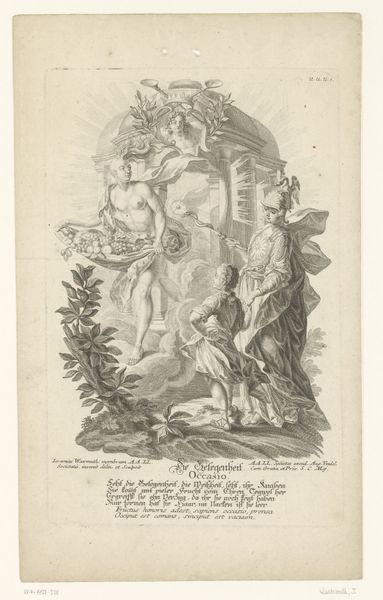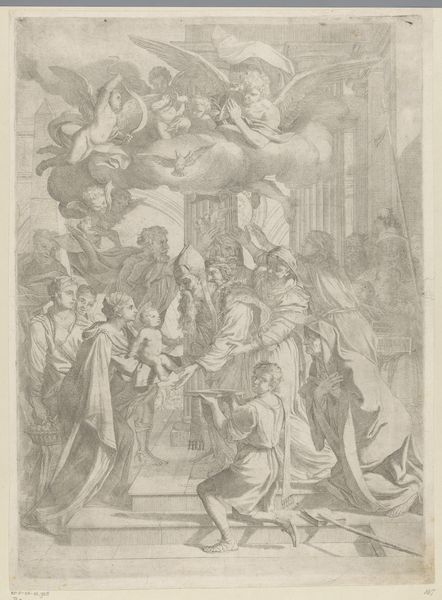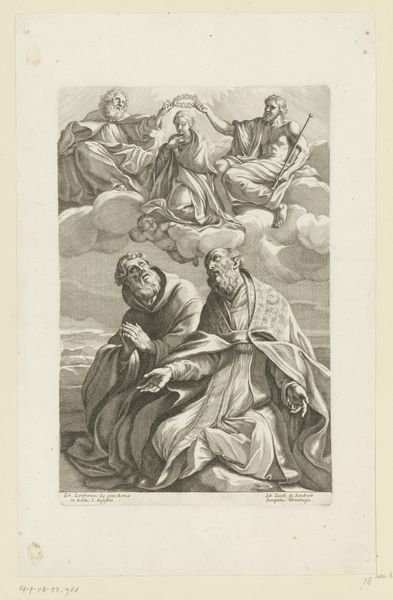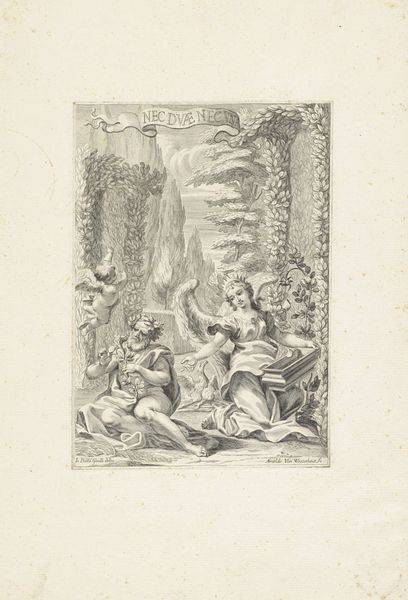
Heilige Servatius van Maastricht door engelen ten hemel gedragen 1837
0:00
0:00
theodoorschaepkens
Rijksmuseum
Dimensions: height 276 mm, width 189 mm
Copyright: Rijks Museum: Open Domain
Curator: Here we have "Heilige Servatius van Maastricht door engelen ten hemel gedragen," or "Saint Servatius of Maastricht Carried to Heaven by Angels," an engraving by Theodoor Schaepkens, dating from 1837. Editor: My first impression is of lightness, a delicate lifting. The upward movement in this monochromatic print feels remarkably ethereal. Curator: Indeed. The artwork situates Saint Servatius within a history deeply entwined with questions of power, authority, and sainthood. The angels bear him aloft, seemingly enacting divine approval. What strikes me is the visual language; it subtly reinforces a patriarchal structure. Editor: I see that too. The angels are classical in their form, while St. Servatius's gestures connect directly to long standing symbols of blessing and authority – the raised hand, the staff. Consider how the figures underneath – almost crushed – underscore Servatius' power. Even his robes evoke that authority. Curator: Exactly! And it is difficult to look at the work without addressing that authority, as some historians claim Servatius cursed the Huns when they demanded entrance into Maastricht. Can this artwork act as a lens through which we examine our inherited assumptions about hagiography and its reinforcement of historical power dynamics? Editor: The visual symbolism speaks volumes. Note the subtle darkness at the base giving way to radiant light. Servatius and his ascension become metaphors for hope, salvation. Also observe that Schaepkens’ choice of the engraving style recalls older, canonical religious prints. Curator: Which connects directly to the contemporary theories about visual reproduction in the 19th century… Editor: Of course, but beyond its place within the evolution of printmaking, it evokes cultural memory of older traditions. For viewers in 1837, that link to the past would be integral to its reading. Curator: Perhaps it is by critically examining art like this, and the embedded biases it transmits through symbol and form, that we can reshape how narratives of power and legacy are constructed in our present moment. Editor: I agree. It reminds us how imagery preserves not only stories, but also deep cultural and emotional associations. It's those persistent undercurrents that give the artwork its resonance.
Comments
No comments
Be the first to comment and join the conversation on the ultimate creative platform.
